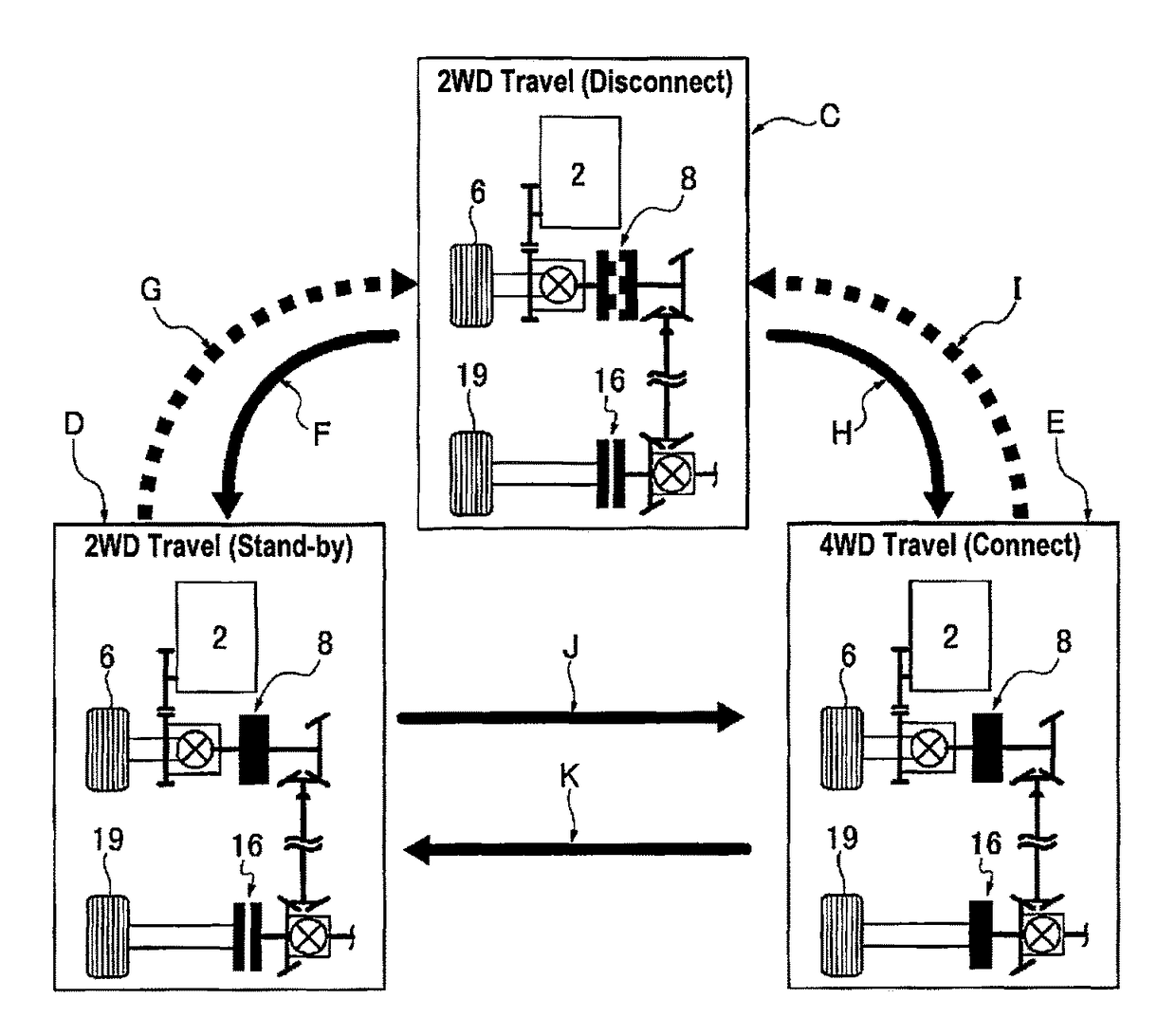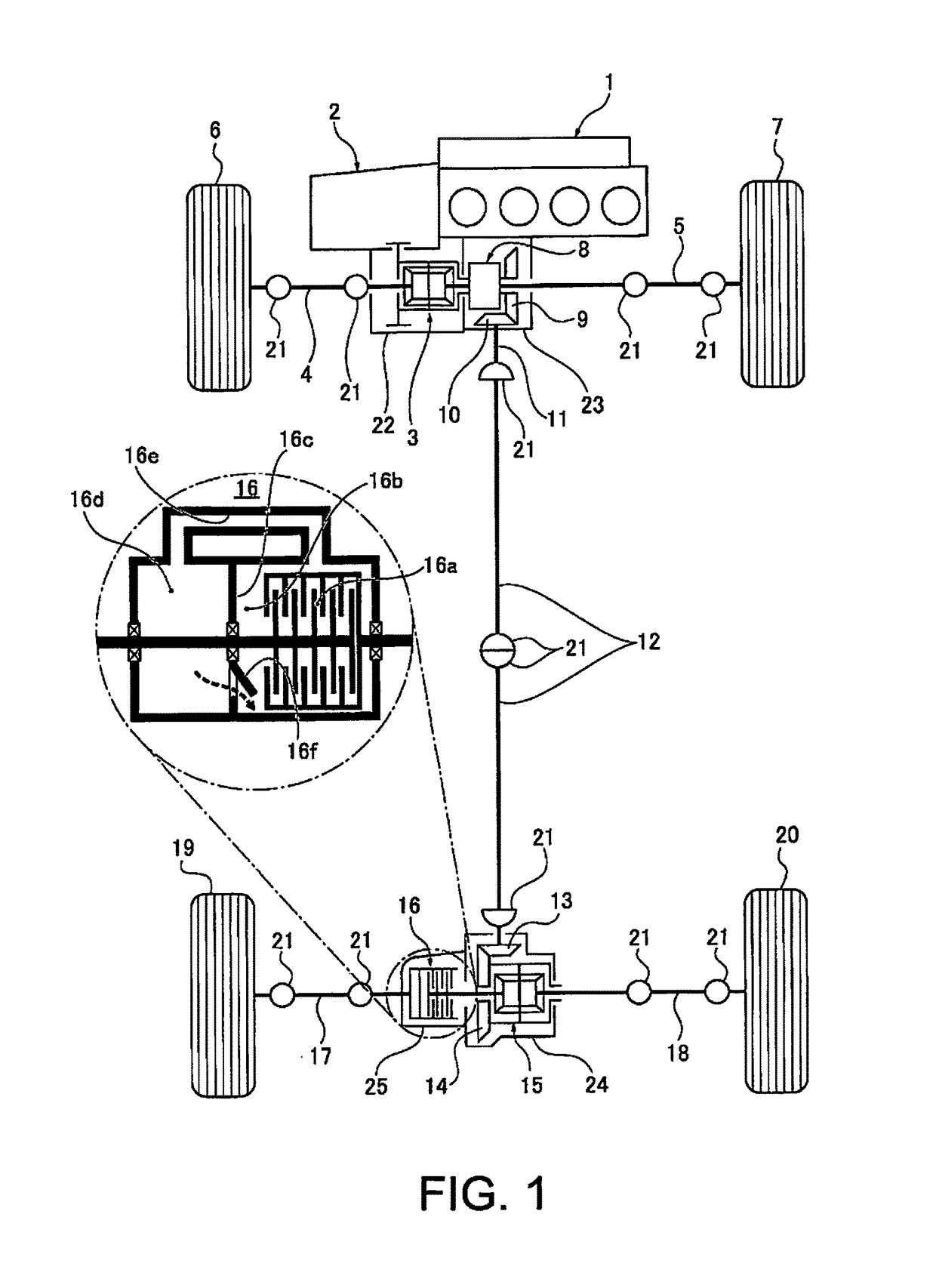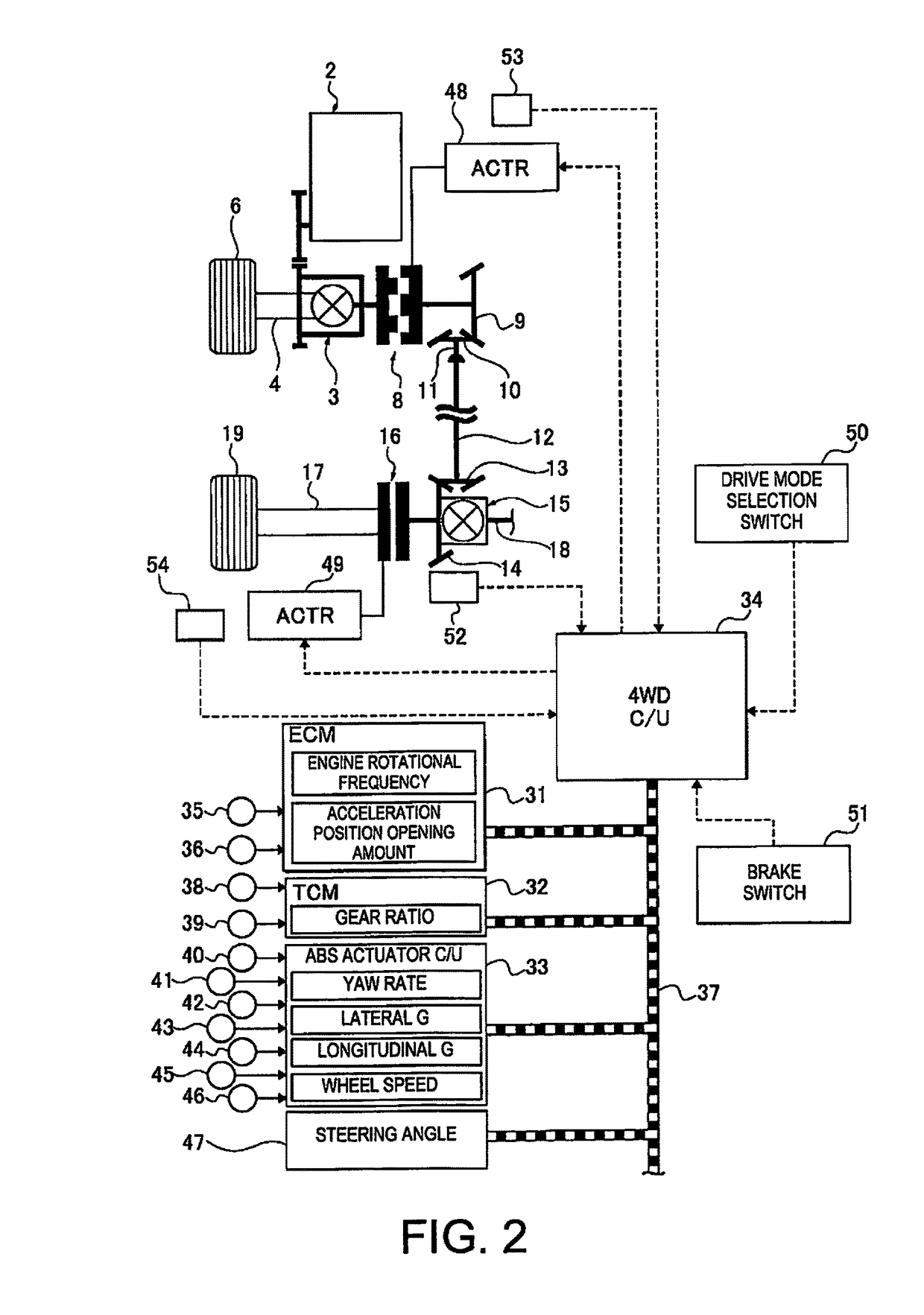Clutch control device for 4-wheel drive vehicle
a technology of clutch control device and four-wheel drive vehicle, which is applied in the direction of mechanical actuated clutches, couplings, transportation and packaging, etc., can solve the problems of reduced travel region in the high fuel efficiency two-wheel drive mode, impaired responsiveness of switching to the four-wheel drive mode, and reduced four-wheel drive performance. , to achieve the effect of suppressing friction loss, high drive, and high energy saving
- Summary
- Abstract
- Description
- Claims
- Application Information
AI Technical Summary
Benefits of technology
Problems solved by technology
Method used
Image
Examples
first embodiment
[0019]Referring initially to FIG. 1, a front wheel drive based four-wheel drive vehicle (one example of a four-wheel drive vehicle) is schematically illustrated with a clutch control device in accordance with a first embodiment. The overall configuration of the clutch control device for a drive system configuration of four-wheel drive vehicle will be described first.
Drive System Configuration of the Four-Wheel Drive Vehicle
[0020]FIG. 1 illustrates the configuration of the drive system of a front wheel drive based four-wheel drive vehicle to which is applied the clutch control device. The drive system configuration of the four-wheel drive vehicle will be described below based on FIG. 1.
[0021]The front wheel drive system of the four-wheel drive vehicle is provided with a transverse engine 1 (drive source), a transmission 2, a front differential 3, a left front wheel drive shaft 4, a right front wheel drive shaft 5, a left front wheel 6 (main drive wheel), and a right front wheel 7 (ma...
second embodiment
[0087]The second embodiment is an example in which the clutch control device is applied to a rear wheel drive based four-wheel drive vehicle, and the positional relationship of the dog clutch and the friction clutch that sandwich the differential is reversed from the positional relationship thereof in the first embodiment.
[0088]FIG. 8 illustrates the configuration of the drive system of a rear wheel drive based four-wheel drive vehicle to which is applied the clutch control device. The drive system configuration of the four-wheel drive vehicle will be described below based on FIG. 8.
[0089]The rear wheel drive system of the four-wheel drive vehicle is provided with a transverse engine 61 (drive source), a transmission 62, a rear propeller shaft 63, a rear differential 64, a left rear wheel drive shaft 65, a right rear wheel drive shaft 66, a left rear wheel 67 (main drive wheel), and a right rear wheel 68 (main drive wheel), as illustrated in FIG. 8. That is, the drive force that has...
PUM
 Login to View More
Login to View More Abstract
Description
Claims
Application Information
 Login to View More
Login to View More - R&D
- Intellectual Property
- Life Sciences
- Materials
- Tech Scout
- Unparalleled Data Quality
- Higher Quality Content
- 60% Fewer Hallucinations
Browse by: Latest US Patents, China's latest patents, Technical Efficacy Thesaurus, Application Domain, Technology Topic, Popular Technical Reports.
© 2025 PatSnap. All rights reserved.Legal|Privacy policy|Modern Slavery Act Transparency Statement|Sitemap|About US| Contact US: help@patsnap.com



